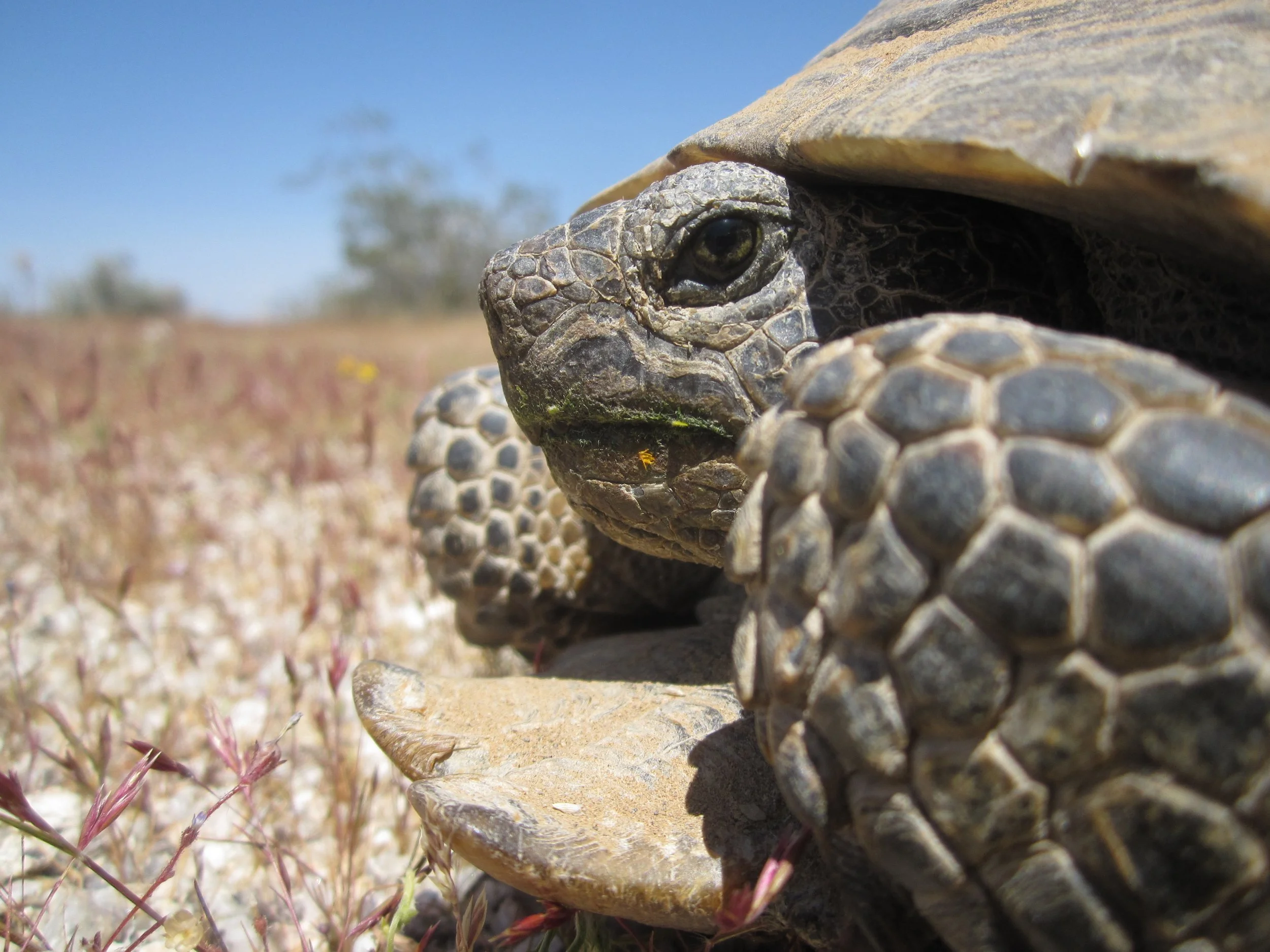$1.9 Million for Desert Tortoise Conservation
On November 15th, 2023 the California Wildlife Conservation Board (WCB) awarded this generous grant to bolster THC’s tortoise conservation efforts in the Western Mojave Desert. The official press release from WCB is as follows…
“A $1.9 million grant [was awarded] to the Transition Habitat Conservancy for a project to study the effects of using a broad range of tortoise conservation tools and techniques to enhance tortoise survival at known tortoise hotspots, located approximately six miles west of Boron in San Bernardino County. “In response to the ongoing decline of desert tortoises, the Desert Tortoise Conservation Innovations project will apply a wide array of cutting-edge conservation actions with long-term monitoring to assess their effectiveness,” said Tim Shields, Founder and CEO of HardShell Labs, Inc. “Tortoises in the study area will benefit from habitat enhancements and raven predation reduction but, more importantly, the innovative combination of actions will serve to inform tortoise conservation efforts across the range well into the future.”
The original press release can be viewed here.
Photo by Tim Shields
Our organization has been working closely with tortoise biologist Tim Shields and Hardshell Labs to survey the Freemont-Kramer Critical Habitat Unit (Bureau of Land Management designation) and our conservation lands within it for tortoise presence. Over the last decade, we have discovered strongholds of tortoise populations that contain higher densities than adjacent areas. We have collected large amounts of survey data during this time on tortoises and these habitats thanks to grant funding from Edison International and the Desert Tortoise Council. Hardshell Labs has engineered new technologies such as the Techno Tort, lasers, remote egg oiling with drones and more to combat one of the largest threats to the tortoise; the common raven. Thanks to this new funding from WCB, we can fully produce, deploy, and measure the results of these innovations in a concerted effort.
As human presence has increasingly grown in the high desert, so too has the raven’s population. This intelligent bird species has access to increased food and water as well as perching and nesting resources due to human structures and establishments, and its numbers have increased accordingly. In order to feed their young, they must hunt tirelessly, and baby tortoises provide excellent meals. With no significant predators, the raven poses an additional threat to the future of tortoises in our desert. The goal of this grant is to utilize our current technological resources to provide raven-reduced buffer zones around areas of high tortoise density, and categorize tortoise habitat preferences in the Western Mojave in order to prioritize land management and land acquisition actions.
The technology developed by Hardshell labs can be viewed in our previous blog post here. These innovations and our story have been amplified by the Mutual of Omaha’s Wild Kingdom, the Los Angeles Times, and others.

